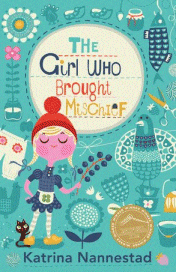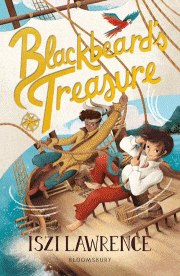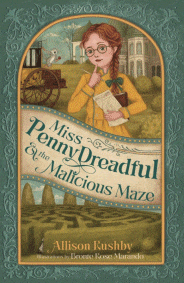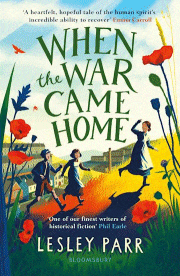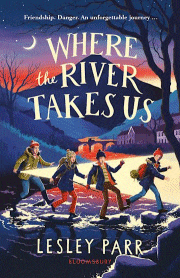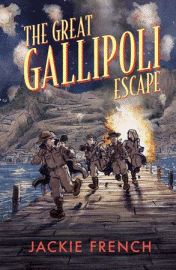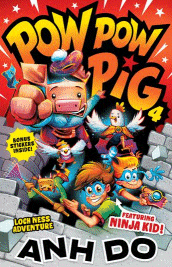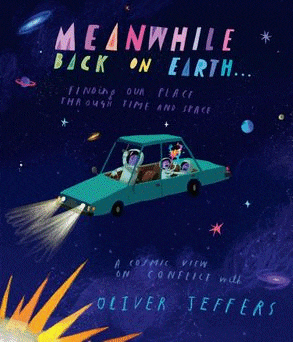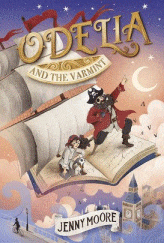
Odelia and the Varmint
Odelia and the Varmint
Jenny Moore
New Frontier, 2023
275pp., pbk., RRP $A16.99
9781922326713
When a pair of unruly fictional pirates escape out of her mother’s book into Victorian London, 11-year-old Odelia Hardluck-Smythe’s lonely life is turned upside down…
After the sudden death of her father leaves her family struggling financially and emotionally as the life of luxury and comfort that they knew disappears, things change dramatically in the Hardluck-Smythe’s household, Trying to support her children, Odelia’s mother spends her time writing an adventure story for a publisher who has rejected all her work so far, while Odelia makes sure the family are able to survive on a daily diet of toast (the only thing she can cook). But when the villain of her mother’s story, pirate Captain Blunderfuss, the ship’s cook and Dog, the oddly named ship’s cat, suddenly come to life and appear in their house, their lives take a remarkable turn.
But rather than freaking out, even though Captain Blunderfuss and Cook are rude, dangerous and obsessed with marzipan fruits, the family adjust to having these unexpected guests, and Odelia sees an opportunity to join the pirates in a search for the treasure she believes her father hid in the family home prior to his death. During their search, Odelia learns that varmints, villains and heroes may not always be as easily identified as they first appear. Who is trustworthy? And while Odelia thinks pirates mean treasure and treasure means buried chest of precious jewels and riches, she discovers that it can have other meanings too.
Despite their somewhat gloomy circumstances, the drama of both the setting and the situation are offset by Captain Blunderfuss continually mispronouncing and misusing the language, which Odelia has to translate to make sense, such as when he promotes her to ship’s basin (bosun) and his regular cry of ‘Ankles away!’ (anchors) offering some light relief as well as the opportunity to explore various terms and phrases. Written for independent readers who like a swashbuckling adventure and mystery, it takes them to Victorian England, a time many will still be unfamiliar with, offering insight into a life where industrialisation in just emerging, far away from the one of instant communication and gratification that they are more likely to know.
As well as exploring a world so different to their own, the endpapers and the teachers’ notes could both take the reader into the world of steampunk, or even into historical fiction generally, opening up a world of new reading adventures.
